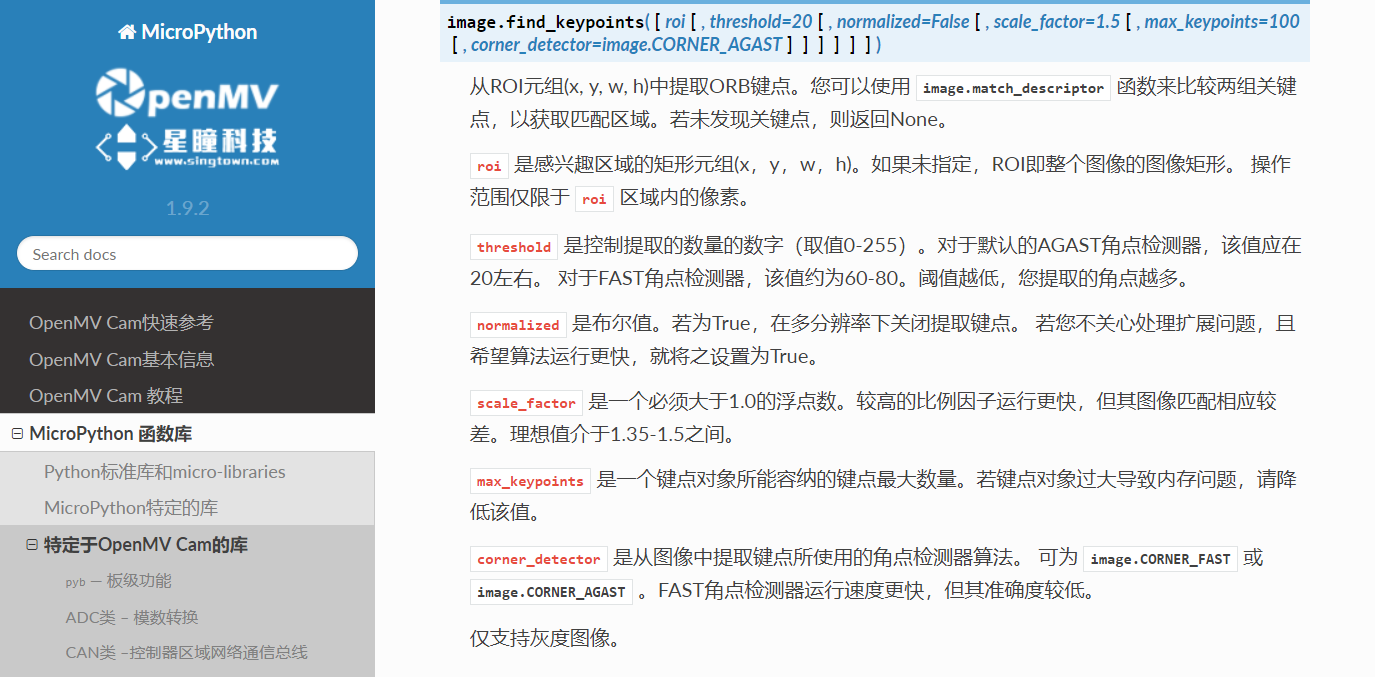Routine description 07-Face-Detection->face_tracking Face tracking
# 人脸追踪例程
#
# 这个例子展示了使用OpenMV Cam的关键点功能来跟踪一个被Haar Cascade
# 检测到的人脸。 该脚本的第一部分使用前面Haar Cascade在图像中找到一张
# 脸。 之后,脚本使用关键点功能自动学习你的脸并跟踪它。 关键点可以
# 用来自动追踪任何东西。
import sensor, time, image
# Reset sensor
sensor.reset()
sensor.set_contrast(3)
sensor.set_gainceiling(16)
sensor.set_framesize(sensor.VGA)
sensor.set_windowing((320, 240))
sensor.set_pixformat(sensor.GRAYSCALE)
# 跳过几帧,让感光元件稳定下来,使设置生效
sensor.skip_frames(time = 2000)
# 加载Haar算子
# 默认情况下,这将使用所有阶段,较低的阶段更快但不太准确。
face_cascade = image.HaarCascade("frontalface", stages=25)
print(face_cascade)
# First set of keypoints
# 第一组关键点
kpts1 = None
# Find a face!
# 找一张脸!
while (kpts1 == None):
img = sensor.snapshot()
img.draw_string(0, 0, "Looking for a face...")
# Find faces
objects = img.find_features(face_cascade, threshold=0.5, scale=1.25)
if objects:
# 在每个方向上将ROI扩大31个像素
face = (objects[0][0]-31, objects[0][1]-31,objects[0][2]+31*2, objects[0][3]+31*2)
# 使用检测面大小作为ROI提取关键点
kpts1 = img.find_keypoints(threshold=10, scale_factor=1.1, max_keypoints=100, roi=face)
# 在第一个人脸周围画一个矩形
img.draw_rectangle(objects[0])
# Draw keypoints
print(kpts1)
img.draw_keypoints(kpts1, size=24)
img = sensor.snapshot()
time.sleep_ms(2000)
# FPS clock
clock = time.clock()
while (True):
clock.tick()
img = sensor.snapshot()
# 从整个帧中提取关键点
kpts2 = img.find_keypoints(threshold=10, scale_factor=1.1, max_keypoints=100, normalized=True)
if (kpts2):
# 将第一组关键点与第二组关键点匹配
c=image.match_descriptor(kpts1, kpts2, threshold=85)
match = c[6] # C[6] contains the number of matches. C[6]包含匹配的数量。
if (match>5):
img.draw_rectangle(c[2:6])
img.draw_cross(c[0], c[1], size=10)
print(kpts2, "matched:%d dt:%d"%(match, c[7]))
# Draw FPS
img.draw_string(0, 0, "FPS:%.2f"%(clock.fps()))
Singtown Technology OpenMV official Chinese document function explanation:

Singtown Technology OpenMV official Chinese document function explanation:
